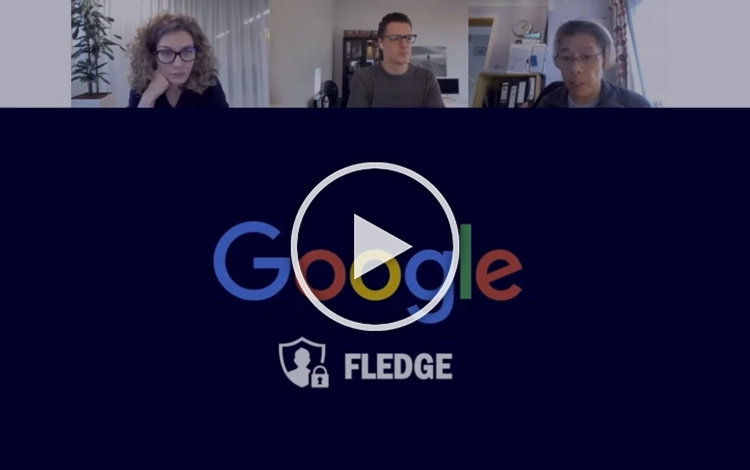What is Google's Protected Audience API and how will it impact programmatic advertising?
by Kalina Dancheva on 20.12.2022

With most browsers already removing third-party cookies, programmatic advertisers and the brands they work for are understandably keen to find solutions to retarget customers using first-party data. Step forward to Google's Protected Audience API (formally known as Google FLEDGE), the latest exciting initiative from the Search giant.
As far as we know at the time of writing, Google's Protected Audience API will be available on a trial basis through Chrome in 2022. The initiative is very much a work in progress but is likely to present a number of challenges and opportunities to digital marketers.
Every brand will need to have an actionable plan to replace the tracking of third-party cookies once they stop being supported by Chrome in 2024. So, whether your business decides to use the Protected Audience API or not, all marketers must understand the processes and strategies involved with using this initiative. Luckily, our very own in-house expert David Tam was able to get exclusive insights into what the Protected Audience API (back then known as Google FLEDGE) might look like and share them during our latest webinar on acquiring customers in a cookieless world.
Here’s a rundown of what we know about Google's Protected Audience API so far.
Third-party cookies - the current state of play
As every digital marketer knows, third-party cookies have been going away from apps and web browsers for some time. We’ve seen many of the main browsers including Apple, Safari, and Firefox, as well as privacy-native browsers like DuckDuckGo, removing third-party cookies, and Chrome’s ecosystem is expected to follow suit in 2024.
With Chrome being responsible for 67% of all global web searches across all devices, the removal of third-party cookies is becoming a much bigger deal and a situation that every marketer and every brand needs to adapt to, as a priority.

For brands and advertisers, the removal of third-party cookies could have a major impact on their ability to target prospects effectively for acquisition strategies. It is also highly likely to limit how advertisers can measure Return On Ad Spend (ROAS) and Customer Acquisition Cost (CAC) from those campaigns.
A lesser-known situation, but an equally important one is that many first-party cookies used for tracking customers and unknown users on owned digital properties are also becoming less reliable as the amount of time the cookies are stored decreases. In some cases, first-party cookies are stored for just seven days. So, if a returning user to your website visits after those seven days, you won’t recognize that session as a returning user. 99% of businesses rely on third-party cookies for attribution, analytics, targeting, and personalization, so this presents a significant challenge to today’s brands and marketers.
What is Protected Audience API (formally known as Google FLEDGE)?
Google's initial name FLEDGE stood for First Locally-Executed Decision over Groups Experiment. As of April 2023, it is renamed to Protected Audience API. It is part of Google’s ‘Privacy Sandbox’ which is designed to enable advertisers to run targeted remarketing campaigns to custom audiences without the need for third-party cookies.
The Protected Audience API is therefore an initiative to enable advertisers to undertake effective programmatic retargeting using first-party data or ‘custom audiences’ when third-party cookies start to disappear from the digital ecosystem. Ultimately, this will enable marketers to target their future customers from a pool of known and anonymous website visitors. Although Google's Protected Audience API is a solution for this, there are also other ID solutions to help leverage first-party data for acquisition and a variety of solutions for leveraging second and third-party data in a compliant way. This includes so-called Clean Rooms which are gaining a lot of hype in the market right now.
Digital marketers, therefore, need to explore a variety of other solutions to get the best fit for their company, both in the short and long term. We’ll be discussing those later on in 2023, but for the purpose of this blog let’s explore how businesses could potentially leverage the Protected Audience API when third-party cookies are deprecated in 2024.
How does Google's Protected Audience API work and why is it important for advertisers?
The Protected Audience API is structured around the four design elements needed to support programmatic retargeting; targeting, bidding, messaging, and reporting. Here’s how it is expected to handle these:
- Targeting - interest groups are recorded within the browser.
- Bidding - all bidding happens on the device, within the browser.
- Creative and messaging - creative from the winning ad is stored within what Google has termed ‘Fence Frames’ where no data can be leaked.
- Reporting - rather than event-level reporting the Protected Audience API offers attribution reporting API. This is likely to be refined further as the initiative evolves.
How this works
In a nutshell, the advertiser (buyer) creates interest groups based on the different websites the customer has visited. By default, the advertiser is the owner of all interest groups that it creates. By creating the interest group in the Chrome browser the buyer is effectively adding the device for remarketing. It is likely that the Advertiser will delegate the creation of interest groups to a third-party technology platform that supports the Protected Audience API, like the Relay42 Customer Data Platform.
When a user visits a publisher's website, the publisher (seller) will decide which interest group(s) can participate in the auction. The seller will invite the Advertisers whose Interest Groups are accepted to place their bids. The buyers do have the option to decline. Those buyers who present their bids will be scored by the seller. The bid with the highest score is generally the winner and the seller will notify the successful buyer of the winning bid.
Watch David's detailed explanation of Google FLEDGE (now renamed to Protected Audience API) in the video below:
What opportunities does Google's Protected Audience API present?
Naturally, the Protected Audience API won’t suit every business but it’s important to weigh up the pros and cons. Even if it isn’t right for your team and your brand right now it may be worth keeping on the back burner to introduce or test at a later date.
Here are some of the key opportunities that Google's Protected Audience API presents.
- Greater control over the bidding process.
- The buyer controls which auction or auctions they participate in so should have more control over their bidding strategy as opposed to relying exclusively on DSPs. This additional control could mean ads perform better and you optimize return on investment.
- Saving costs on DSPs.
- DSPs typically bundle their costs as license and/or in the CPM. With the Protected Audience API, advertisers will have less benefit in using a DSP and therefore they can save on these costs.
- Better targeting.
- The buyer generates the bid which is subsequently scored by the seller for desirability. The highest desirability score wins the ad placement which should mean better targeting and higher-performing ads. Furthermore, as the seller is prepared to show ads this should lead to better-optimized targeting and improved ad spend.
Next steps for preparing for Google's Protected Audience API
As you will see from David’s video presentation, his impressions of Google FLEDGE so far are that it is currently quite complex and the processes and strategy will take a considerable amount of getting used to.
This is a significant departure from programmatic advertising as we know it, after all.
As we mentioned earlier in the article, the Protected Audience API will not suit every business or every team. It will need to be considered carefully before testing or adoption and, of course, the product is likely to change and evolve over the coming months and years as Google, the industry, and users react to developments.
At Relay42 we are already carrying out tests and experiments with our customers to see how the adoption of the Protected Audience API could work and whether the benefits are what we are being told to expect. We do anticipate some exciting opportunities for advertisers in terms of being more in control of the bidding process and also being able to experiment with messaging to allow us to reach new audiences and customers.
We will be posting updates just as soon as we have more information, so watch this space!
In the meantime, if you would like to see an early demo of Google's Protected Audience API get in touch today. It always pays to be ahead of the curve in digital marketing, so why not take this chance to get prepared?
You May Also Like
These Related Stories

What is Google's Privacy Sandbox and What Do Digital Marketers Need to Know?

How Google’s Removal of Third-Party Cookies in Chrome Will Affect Your RoAS


